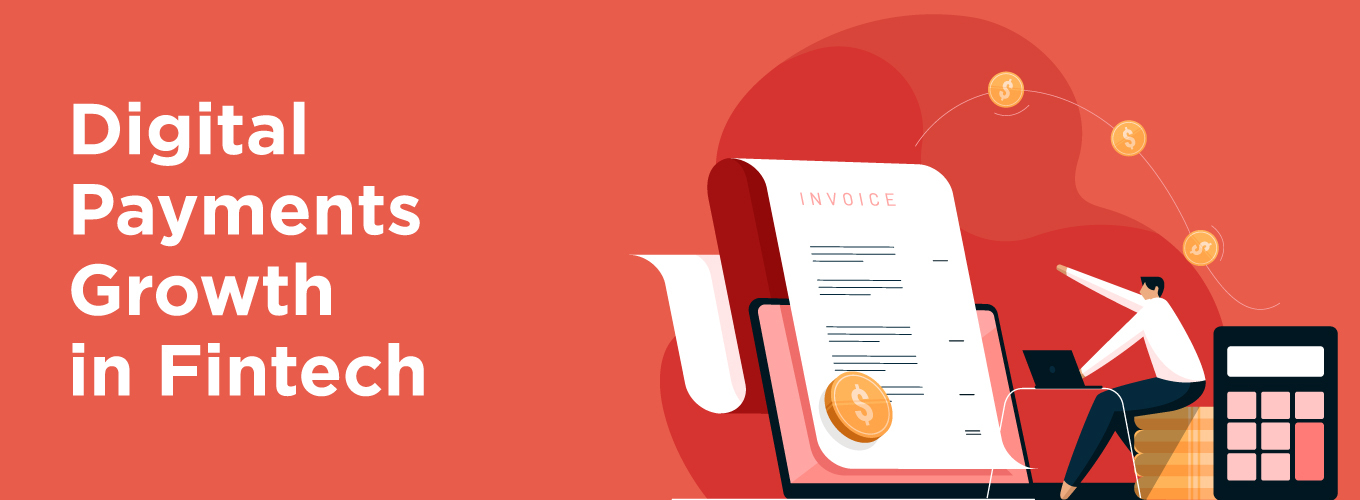Digital Payments Growth in Fintech
In 2016, the National Payments Corporation of India (NPCI, an organization of the Government of India, launched the Unified Payments Interface (UPI) to propel India into the digital payments era, and the growth has been staggering, to put it lightly. For instance, in the last five years, 274 banks have associated themselves with the UPI ecosystem, and more than 4 billion transactions (data as of November 2021) have been facilitated by either scanning a QR code or clicking a button. The numbers mentioned above are restricted only to the UPI. Take into account the massive and sustained growth of digital payments technologies in the Indian fintech space, and you will realize that ‘digital payments‘ is arguably the fastest growing sector in the Indian fintech landscape. According to a BCG and PhonePe Pulse report, the digital payments landscape is poised to grow threefold to reach US$ 10 trillion by 2026. A conclusive testament to the vigorous growth.
What is ‘digital payment’? Why are we discussing it now? Digital payment refers to leveraging technology to enable person-to-person, person-to-organization, organization-to-person, or organization-to-organization financial transactions rather than cash. For instance, using a credit card or a debit card, google pay or buy-now-pay-later applications like Zest Money, or mobile banking for payments are different modes of digital payments where cash is not involved.
Digital payments play a significant role in an economy like ours, considering the amount of unregistered black money in circulation, predominantly transacted as cash. Furthermore, digital payments enable financial inclusion. Today, more people have access to banking infrastructure and facilities because it is easy to send and receive money on a mobile phone without having to go through complicated banking procedures. For instance, the introduction of the e-RUPI scheme by the Indian government seeks to deliver funds to the masses through electronic payment methods leveraging QR codes and text messages to circumvent the misuse of funds by local geopolitical forces, a common occurrence in India. At the same time, this move will ensure increased percolation of funds to all strata of society. Since mobile phone penetration is consistently increasing nationwide, this move will create a profound impact.
Also Read: Top Fintech Companies In India
A key aspect in enabling unprecedented digital payments growth is the adoption of digital payment methods by merchants and retailers. From enabling point of sales machines for cashless and electronic payments, accepting multiple online payment merchants, integrating their payments with the UPI ecosystem, and providing a seamless cashless transaction experience, the merchants have come a long way.
What key trends will shape digital payments in the near future?
According to Accenture’s ‘Growth in Payments’ report, three major forces are driving change in digital payments.
The introduction and adoption of CBDC (Central Bank Digital Currency): India’s finance minister announced the launch of India’s CBDC as part of the annual budget for 2022-23. A Central Bank Digital Currency is a digitized version of the existing fiat currency, in our case, the Indian Rupee. However, considering it is digital, there is a higher potential for widespread disbursement as part of nationwide fiscal and monetary policies, resulting in increased financial inclusion, ease of use, and transparency.
Changing consumer behavior and expectations – Post-pandemic, people expect a cash-less transaction experience, whether in the nearby kirana store or a global retailer. This increasing demand for a cashless experience is a testament to the growth of brands such as PayTM, Pine Labs, PhonePe, BharatPe, RazorPay, and more, which offer UPI-integrated digital payments through QR codes, point of sales machines integrated with a QR generator, payment gateway options for eCommerce transactions, and more. With zero-interest EMIs and buy-now-pay-later schemes being introduced for physical transactions, more change is expected in consumer behavior.
Use of Artificial Intelligence and Cloud Computing – AI systems will increasingly be used to identify transaction anomalies and improve fraud detection. With cloud computing and open-source banking APIs, more legacy banking institutions will be able to adopt novel payment methods bringing them into the digital race. This method is called open banking, and open banking, if done at scale, could be a game-changer in a country as diverse as India.
Also Read: What Is FinTech And Why Is It Important?
As these changes continue to happen, some gradually, some rapidly, the adoption of digital payments is only going to increase, leading to an increase in job demand for highly skilled tech professionals in the digital payments sector.
Stay abreast of the latest job openings in this high-growth sector. Follow us on LinkedIn or register on our job portal for regular updates.









